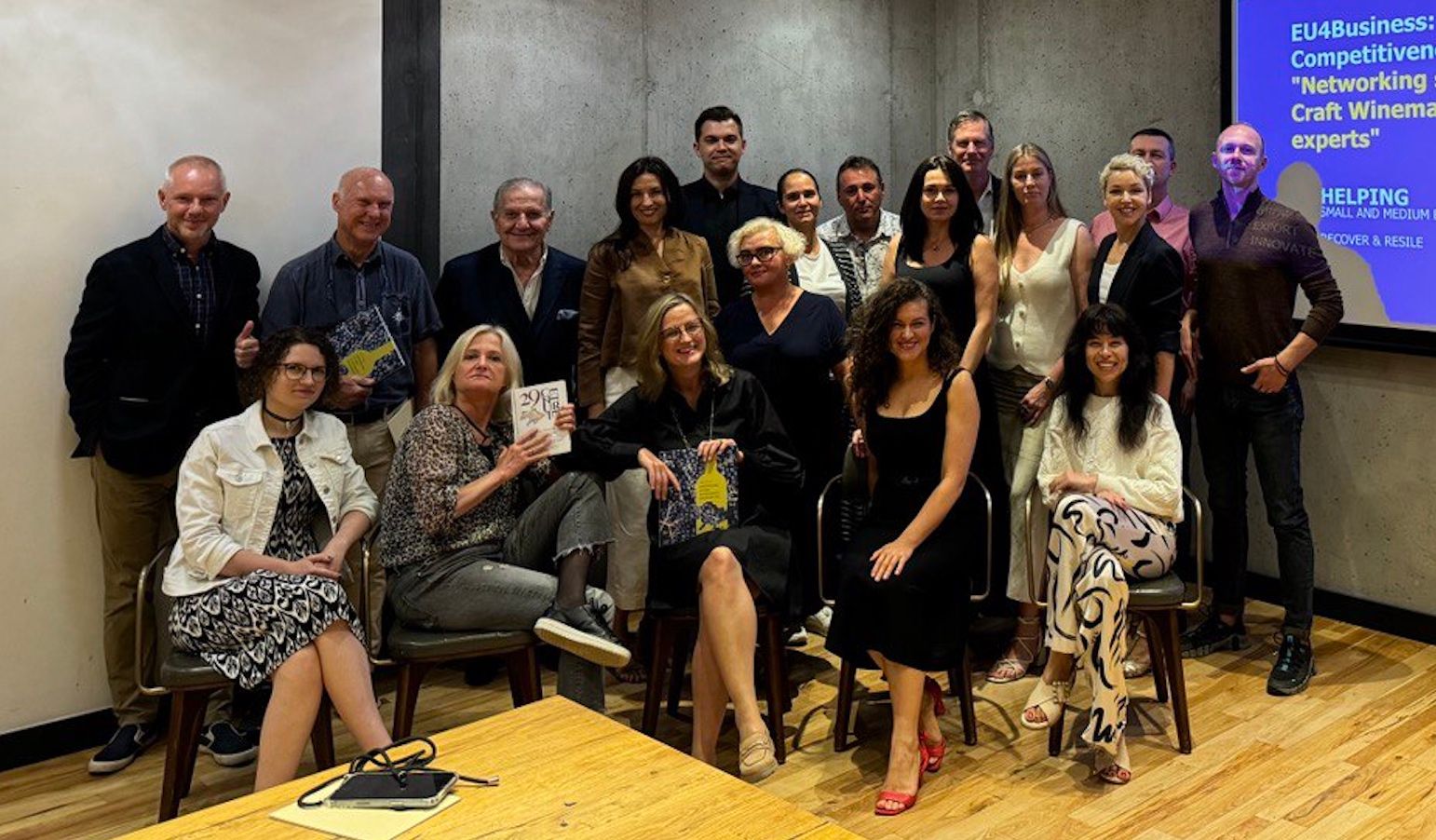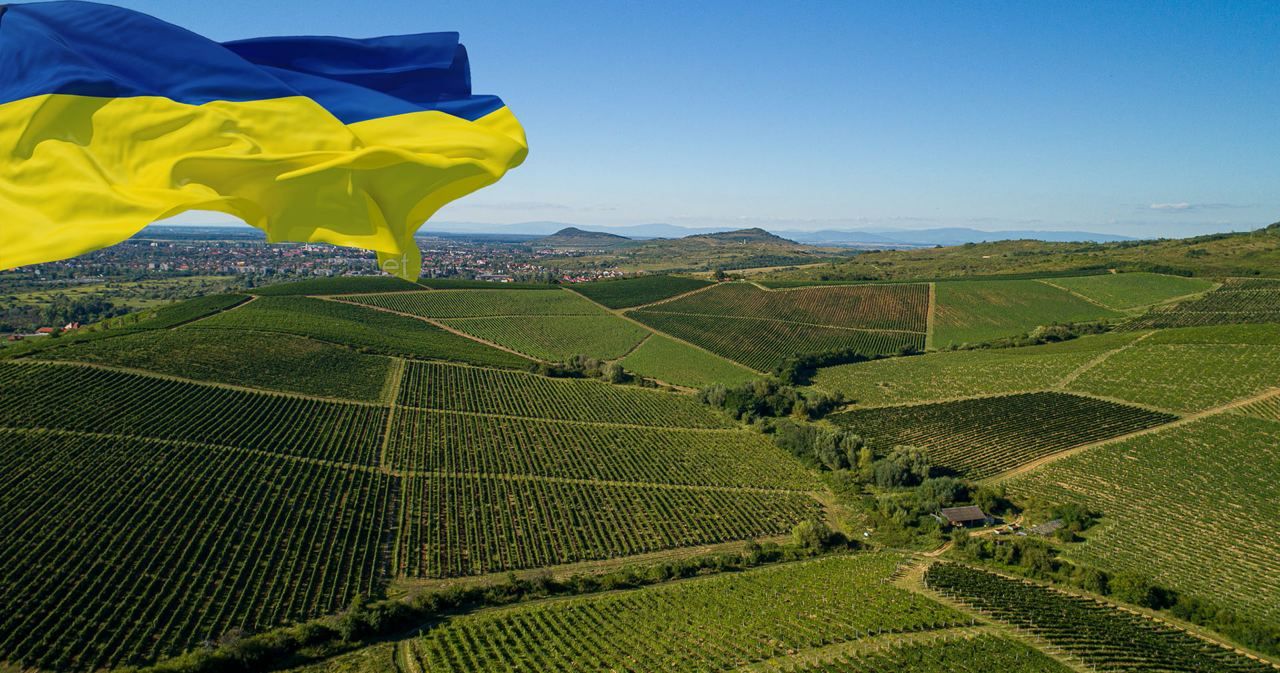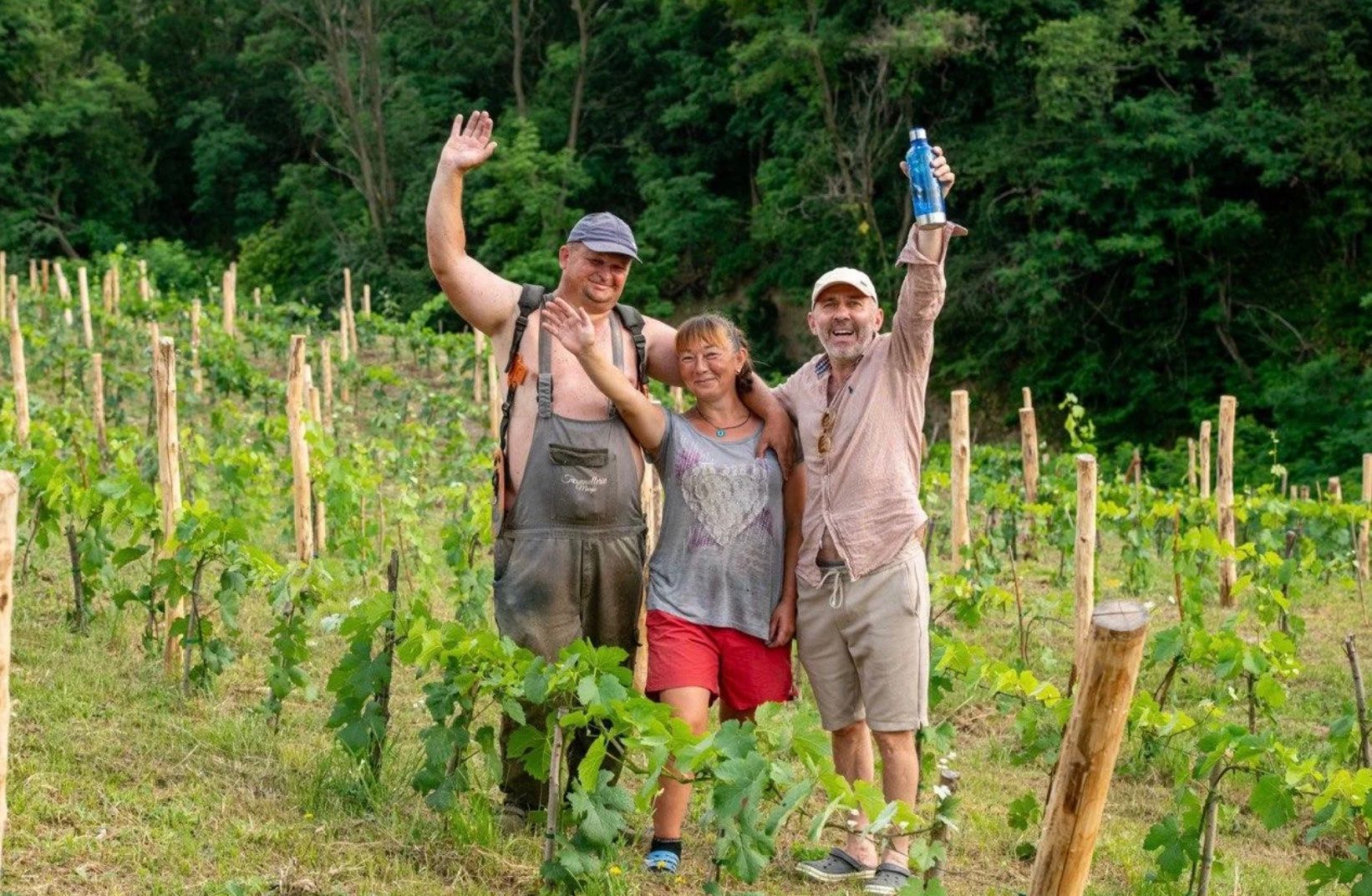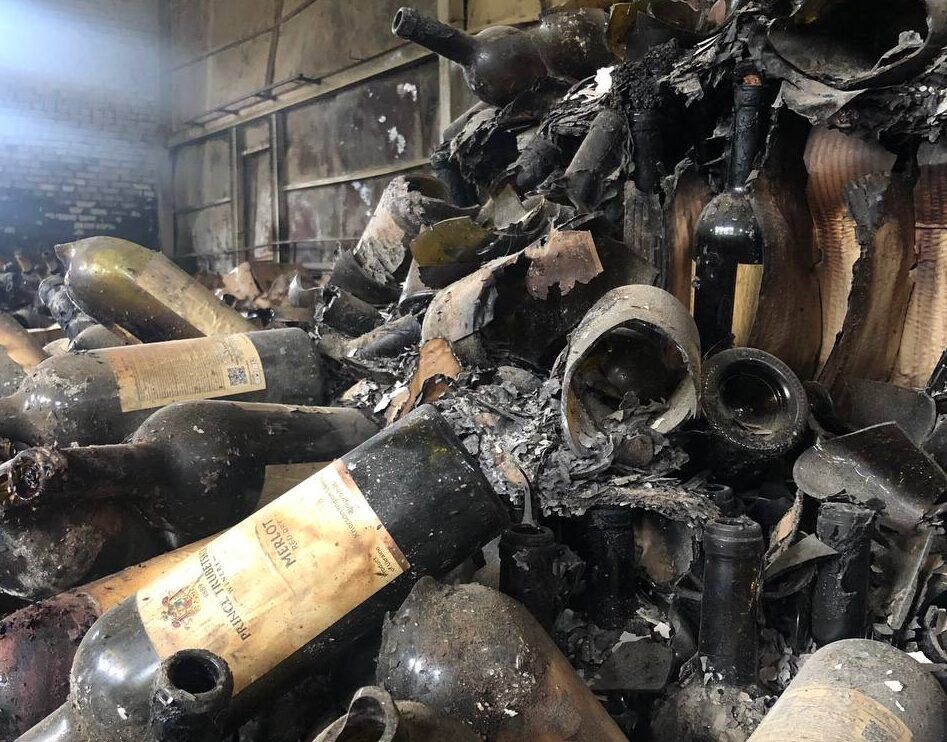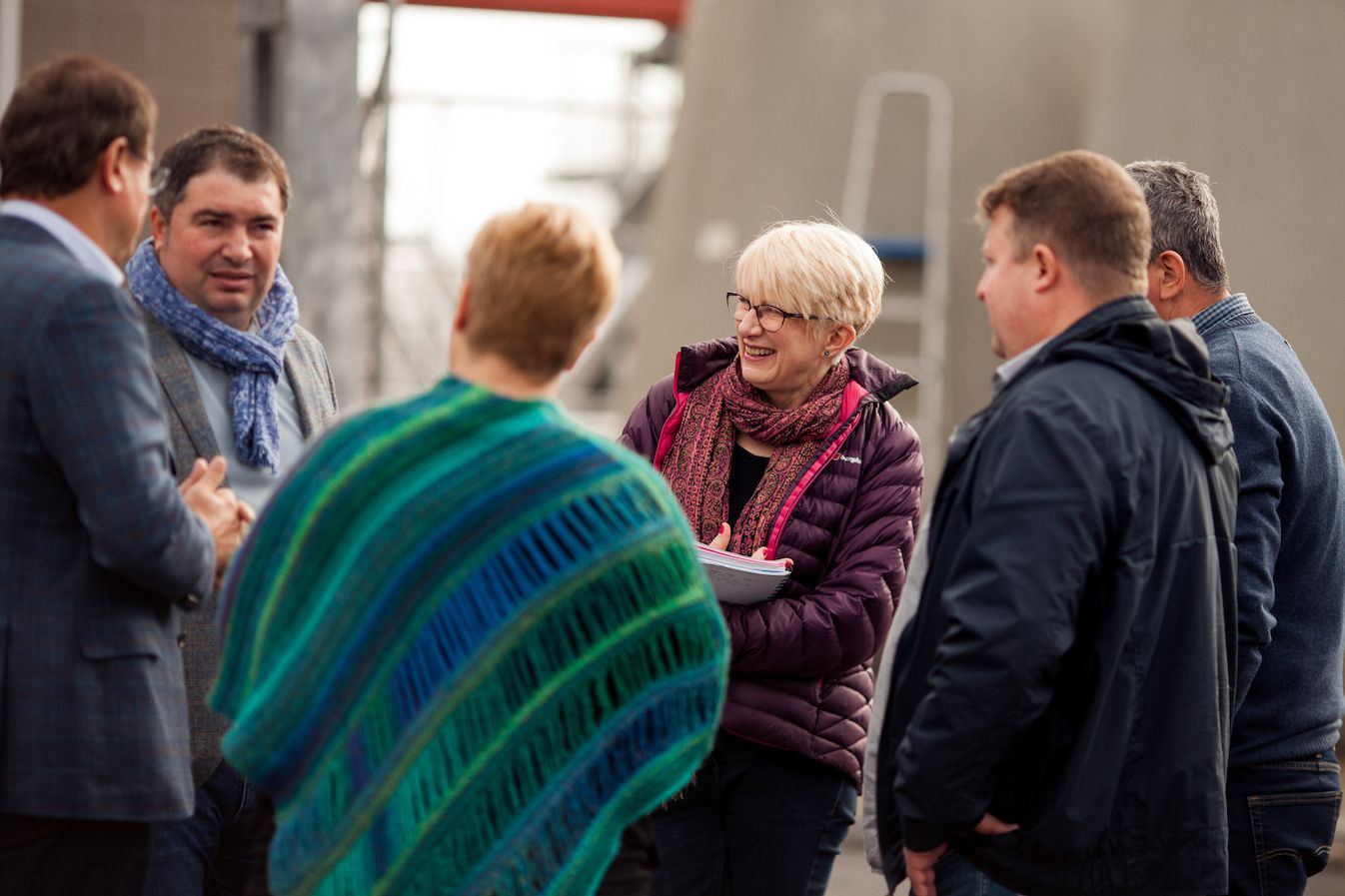Can you tell us about the Top24 Best Wines of Ukraine initiative - how did the idea come together?
The idea to organise a tasting of Ukrainian wines for Masters of Wine belongs to Wojciech Bońkowski MW, a great friend of our team and of Ukrainian winemaking and Wines of Ukraine.
Last spring, together with Chris Yorke, chief executive of Austrian Wine, Wojciech visited Zakarpattia (one of Ukraine’s biggest wine regions) on a consulting and educational mission. Our guests had the opportunity to taste several dozen Ukrainian wines and evaluate their quality and potential for export markets.
It was during that trip that the idea of organising a larger-scale tasting and asking Masters of Wine to come and select the Top 24 Best Wines of Ukraine was born.
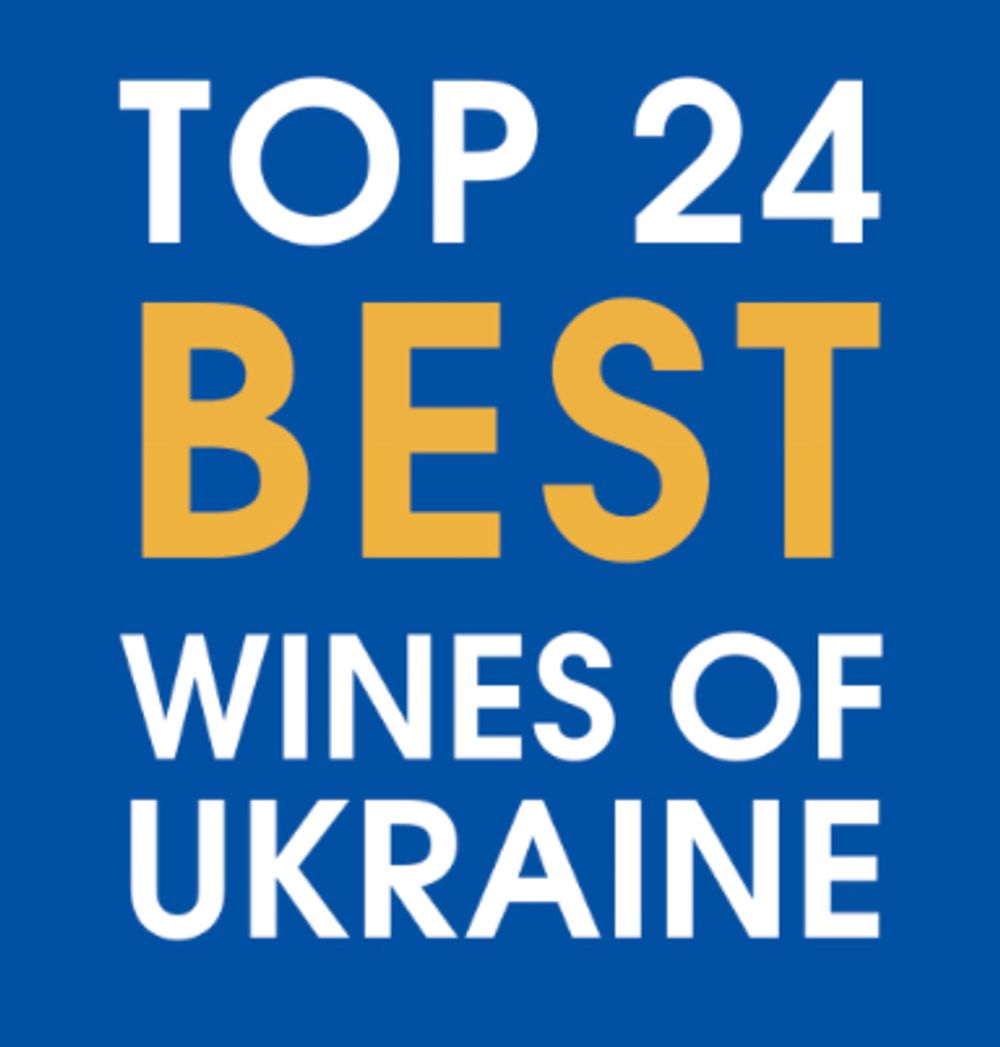
Wojciech believes Ukrainian wines have a great, untapped potential on international markets, both for their personality and quality.
As he explains: “This has strongly emerged from a survey of over 60 MWs which I conducted this spring. I have been following the wines with interest for several years. Visiting Zakarpattia in April 2024, I was really struck by the relentless spirit and positive vision of the wine people I met.
“I consider it both a personal honour and a duty to contribute to their international success. And there is no better way to spread the word than through a great panel of experienced tasters and MWs who will examine the current production from all of Ukraine’s winemaking regions and select the most exciting wines that can be further promoted at wine events, masterclasses, and reviews on key markets.
“The final Top 24 has the opportunity to become a very strong business card for Ukraine’s wine sector, while also inspiring other producers in the country to join the next editions and the collective effort to strengthen Ukrainian wine’s image abroad."
Why did you want Masters of Wine to be on the judging panel versus other trade experts or professional wine buyers?
MWs represent the pinnacle of expertise in the wine industry. The expert evaluation provided by MWs carries significant weight and authority. These professionals possess the ability to objectively assess wines and also wield considerable influence over the opinions of importers, distributors, and consumers.We also needed proof that the selection process was transparent, so the reputation of MWs was really important.
How did you decide which MWs to invite and what particular skills and experience were you looking for?

The Magnificent Six: the six Masters of Wine that were selected from Ukraine's key export markets in Europe to take part in the judging of the competition
Initially, we identified the most promising markets for the export and promotion of Ukrainian wines. Based on this analysis, we selected the most influential and expert MWs from each market. We sent out about 12 invitations and consequently confirmed six MWs who then served on the jury. Additionally, all the MWs were already familiar with Ukrainian wine and understood the stylistic characteristics of our wines, including knowledge about our local varieties
Who were the MWs that were involved and what were there responses to the wines they tasted?
Poland
Wojciech Bońkowski is a Master of Wine and a wine writer from Poland. Simultaneously he developed a career in wine, working in London before returning to Poland where he published eight books and founded the country’s leading wine website, Winicjatywa (2012), and wine magazine, Ferment (2017). The Ferment media group now also includes a wine events agency, wine school, and publishing house. He was president of the Polish Wine Trade Association (2015–22) and is a member of the Académie Internationale du Vin. He currently focuses on the wines of Italy, Greece, Austria, Central and Eastern Europe.
Wojciech quite simply has made the Top24 Best Wines of Ukraine project possible.
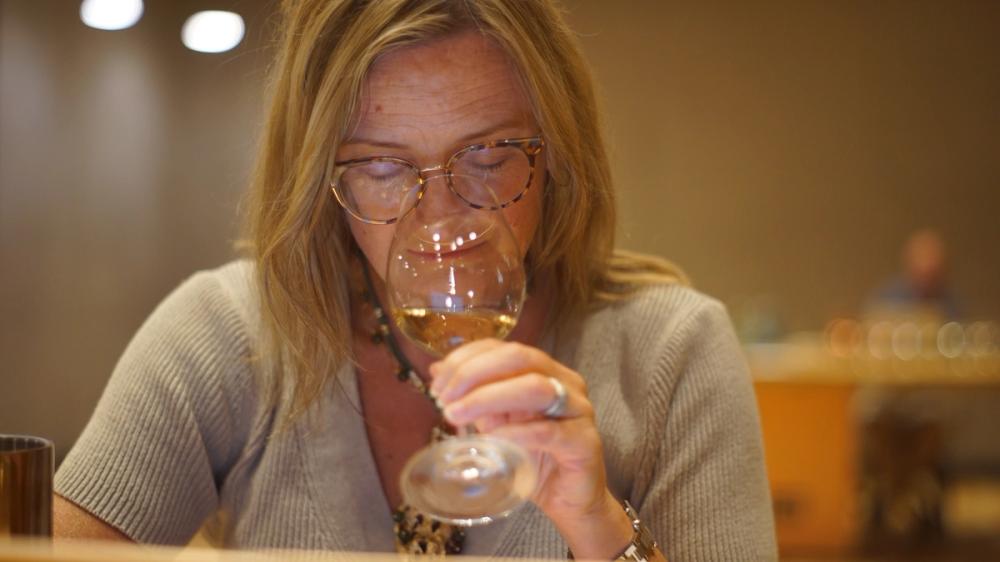
Sarah Abbott MW is widely experienced in helping emerging wine countries find the right markets for their wines
United Kingdom
Sarah Abbott became a MW in 2008, after 10 years of working in sales, sourcing, education and marketing roles for specialist fine wine importers of Burgundy, Bordeaux and Italian wines. She founded Swirl Wine Group in 2006 to offer consultancy services to wine companies and producers and is one of the co-founders of the Old Vine Conference.
United Kingdom
Richard Bampfield MW passed the Master of Wine Exam in 1990. He regularly guides groups of students and press on visits to Bordeaux and Burgundy, and has been actively involved in the promotion of English wines. He is now probably best known for his work writing tasting notes and evaluating wines for Lidl and is a regular presenter on 67 Pall Mall’s TV channel, www.67pallmall.tv. Bampfield is a past chairman of the Association of Wine Educators and was the European Champagne Ambassador 2009.
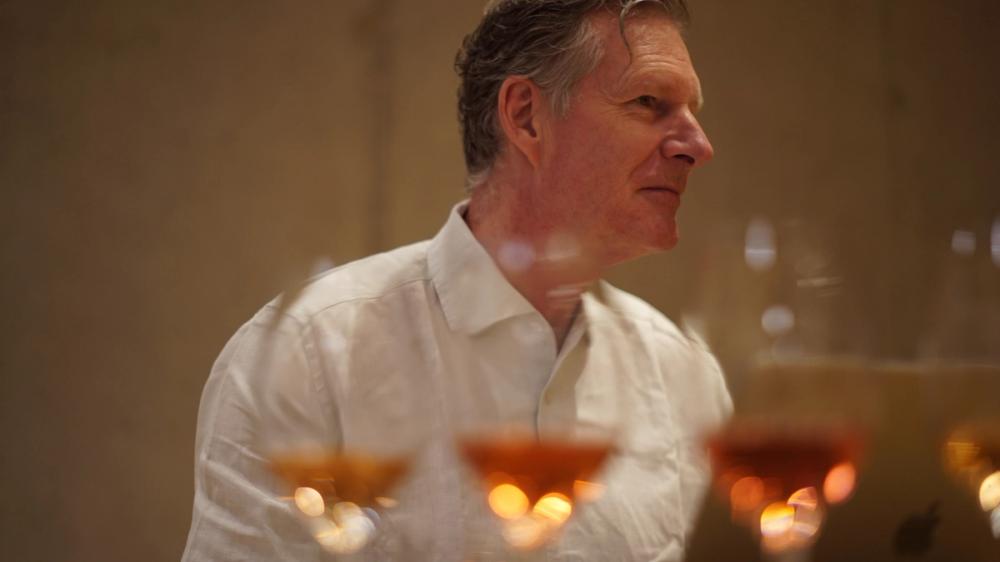
Cees van Casteren MW is one of the Netherlands' most respected wine writer and critic
Netherlands
Cees van Casteren MW spent 14 years in fine chemicals and oenological specialties. He started writing about wine in 2004. Since then he has written 12 books and some 600 articles on wine and food. His most recent book is Anyone Can Taste Wine. He is a judge at international wine competitions, and a WSET Educator. He also runs his own independent wine consultancy and training business. Van Casteren twice been named Dutch Vinologist of the Year. He currently is chairman of the United Vinologists, the main association of wine professionals in The Netherlands.
Germany
Caro Maurer MW has been writing about wine since the early 1990s. She graduated from the course to obtain WSET diploma level five as Germany’s top student. She was the first woman from the German-speaking countries to become a MW in 2011. Now she shares her working time between the General-Anzeiger, the daily newspaper published in Bonn, and as a writer for Germany’s leading food and wine magazine, Der Feinschmecker (The Gourmet), and the famous British wine magazine Decanter. She also works as a wine educator for WSET Diploma across Europe and hosts educational seminars and tastings for numerous wine associations and judges in international wine competitions including Decanter where she is a panel chair.
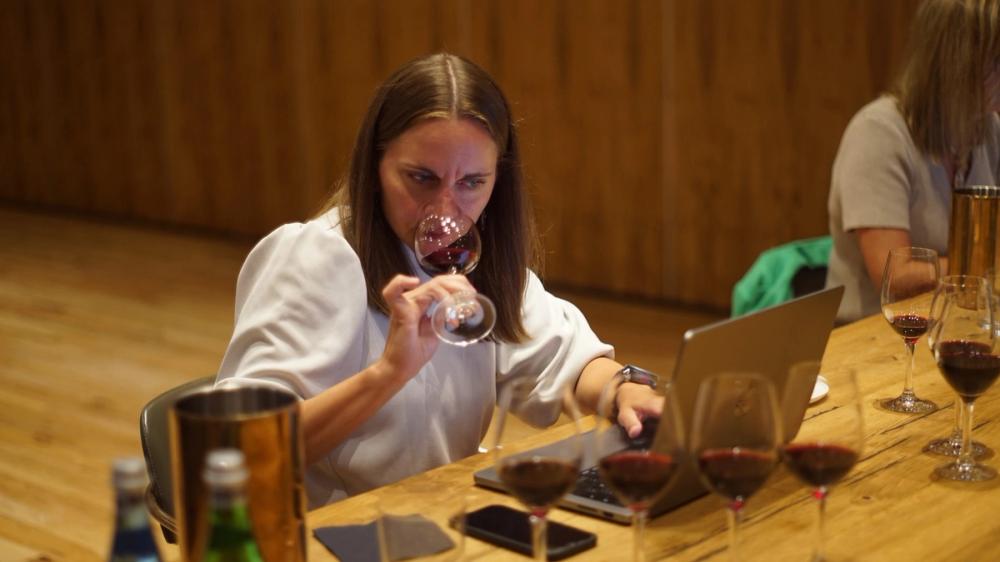
Award-winning sommelier Heidi Mäkinen
Finland
Heidi Mäkinen MW is portfolio manager and partner of a Finnish wine importing company Viinitie. She became the Best Sommelier of Finland and the second in Chaîne des Rôtisseur’s Jeunes Sommeliers of the World in 2015, and the eight Best Sommelier of the World in 2016. She was selected as one of The Future 50 by WSET and IWSC in 2019. She is also currently the president of the Finnish Sommelier Association and a member of ASI Sommeliers Contests Committee. She also teaches WSET at all levels and judges in various international wine competitions.
What did the MWs think of the competition and quality of Ukrainian wines?
Sarah Abbott MW:“I think Ukrainian red wines are confident and established. We’ve tasted some international varieties — Cabernet Sauvignon, Merlot, and they were rich, intense yet very fresh. This combination of intensity and lightness in them is fascinating. I must admit you also make great Saperavi, and the Saperavi-Cabernet blends were really delicious! Speaking of local red varieties, I especially liked the unoaked Odesa Black, it‘s so exuberant. The white wines also have this freshness, which is, in my opinion, a part of Ukrainian wines‘ character.”
Wojciech Bońkowski MW: “We were looking for wines of personality, of high quality, the wines that tell a story, represent a territory, wines made of the original grape varieties, and we have come up with a very representative list. We have a wonderful selection of styles, wines made from international grape varieties such as Cabernet Sauvignon and Merlot, but also local grapes, such as Telti-Kuruk, Sukholymansky and Odesa Black.
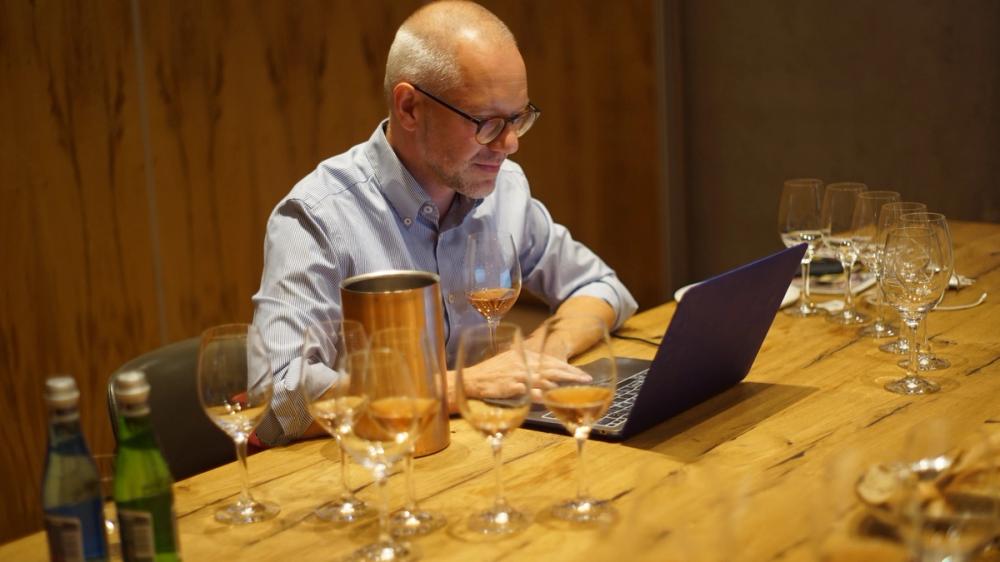
Wojciech Bońkowski MW was the catalyst for making the awards happen and bringing his fellow MWs on board
“Could we compare Ukrainian wines with those from other wine producing countries? Yes and no. I think Ukrainian wines have something from Central and Eastern Europe because of the climate and some grape varieties, a bit of Georgia because of a common tradition, they’ve got fresh and elegant wines coming from the cool climate zones, and rich, Mediterranean style wines from Odesa region in the south. I think Ukraine is really unique in that combination."
Richard Bampfield MW: “I suspect people‘s curiosity about Ukrainian wines, which I‘ve witnessed during the last couple of years, has been partly out of sympathy — not surprisingly at a time of Russian aggression, when Ukraine’s plight has prompted a lot of support from people in the UK and in other countries. Now that we‘ve tasted the wines, and become more familiar with them, we are in no doubt that Ukrainian wines deserve attention on their own merit. That’s a big step."
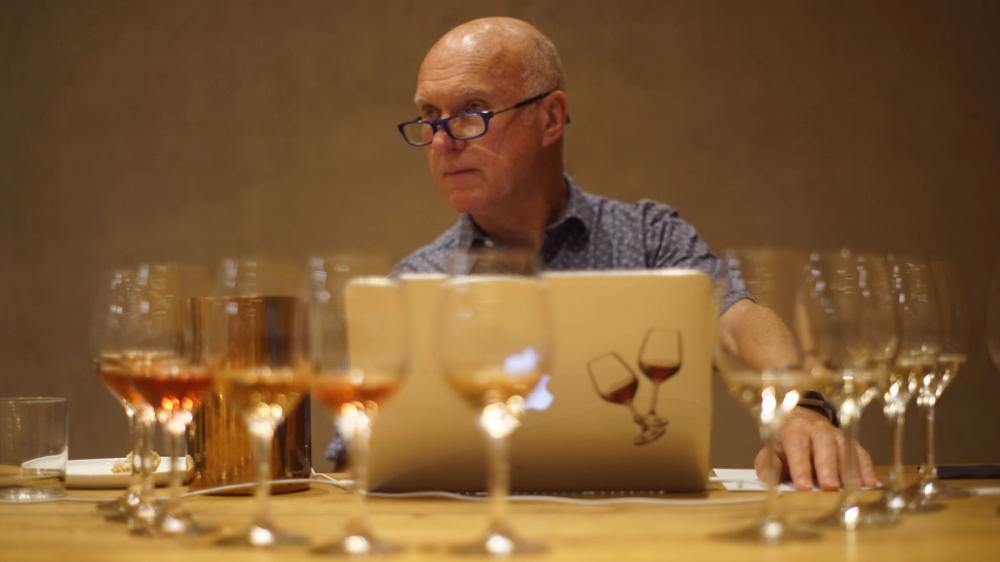
Richard Bampfield MW was able to share his expertise of the UK market
"What we need to do now is to make the commercial argument stronger, and I am certain that we can do that, with the quality of the wines we‘ve tasted in Warsaw. As an example, we‘ve seen Greek and Georgian wines becoming a lot more popular in the UK in the last couple of years. There‘s absolutely no reason why those people who are buying those wines wouldn’t buy a bottle of Ukrainian wine, taste it, and buy a few more.”
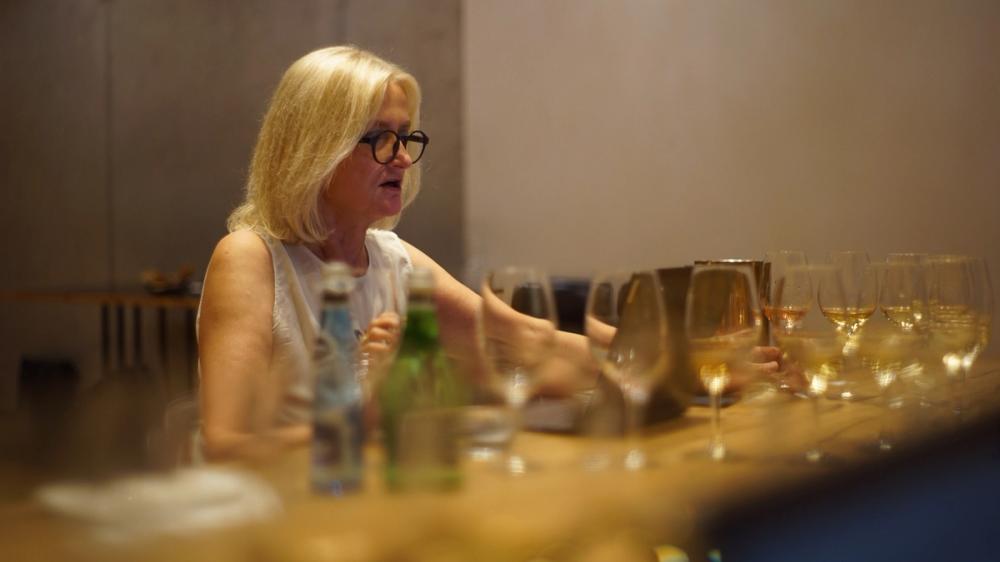
Caro Maurer MW is one of Germany's most prominent wine writers
Caro Maurer MW: “For me, the indigenous and local grapes are the strongest side of Ukrainian wines. For example, Sukholymansky, your local white, was a very strong start, both in still and sparkling categories. I was also very impressed by Odesa Black, your famous red, both leaked and unoaked.
There were really well-made wines from international varieties in this tasting — but, honestly, what is the reason to push just another Cabernet Sauvignon on export markets? I find new and unique grapes much more interesting.”
How many wines did they taste and what criteria was there for entry?
There was just under a 100 wines entered - 91 -from 27 wine producers.
The participants were recruited by the Wines of Ukraine team, each of us having good contacts with Ukrainian winemakers and a profound understanding of the Ukrainian winemaking field. We made an open call for all Ukrainian wineries that were able meet the selection criteria:
- only licensed wineries.
- ready to export.
- the minimum available quantity of each SKU submitted for the tasting should be no less than 2,000 bottles.
The recruiting campaign included personal contacts, emails and newsletters, social media, news in the major Ukrainian wine media etc. Our team also organised a Zoom with potential participants, to present the project and answer questions.
What criteria did the MWs use to get to the final 24?
Each of the MWs was objectively evaluating the quality of the wines — not according to personal preferences. For instance, some may not like orange wines or full-bodied reds, but these wines may still be of a fine quality. The evaluation system was based on OIV criteria, with a strong resemblance to the approach used by Decanter WWA.
What do you now plan to do with the final list of 24 wines - in terms of export and promoting them around the world?
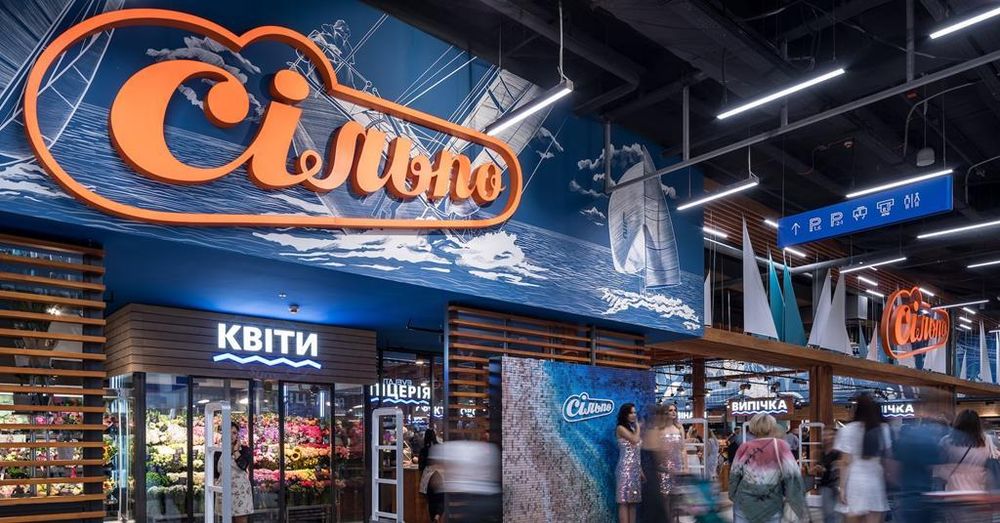
The 24 wines are going to be sold and promoted by Silpo the Ukrainian retail chain
The Top 24 Best Wines is the list with which we will be presenting our country at international events. Additionally, we have signed a contract with the big retail chain in Ukraine called Silpo, where a dedicated stand will feature these Top 24 wines.
The international wine media has written about the awards and published the list of wines and wineries, which is crucial for us. Our mission is to loudly promote Ukrainian wines worldwide and prove the quality with the expertise and experience of masters of Wine. We have also received several inquiries about importing our wines from the Top 24 list.
You also have a Super 12 - how were they chosen?
These 12 are just best of the best from a larger 24 selection — literally, these are the wines which scored the best in each category.
What do you now hope to achieve with the competition?
The popularisation of Ukrainian wines, as well as obtaining an export evaluation regarding the quality and compliance of our wines with international standards, is crucial. Ukraine is only just emerging on the international stage, so it is important for us to gain recognition and establish our place on the world wine map. We know that our wines deserve to stand alongside those from other winemaking countries, and thanks to such events and international exhibitions, more and more people around the world will learn about this.
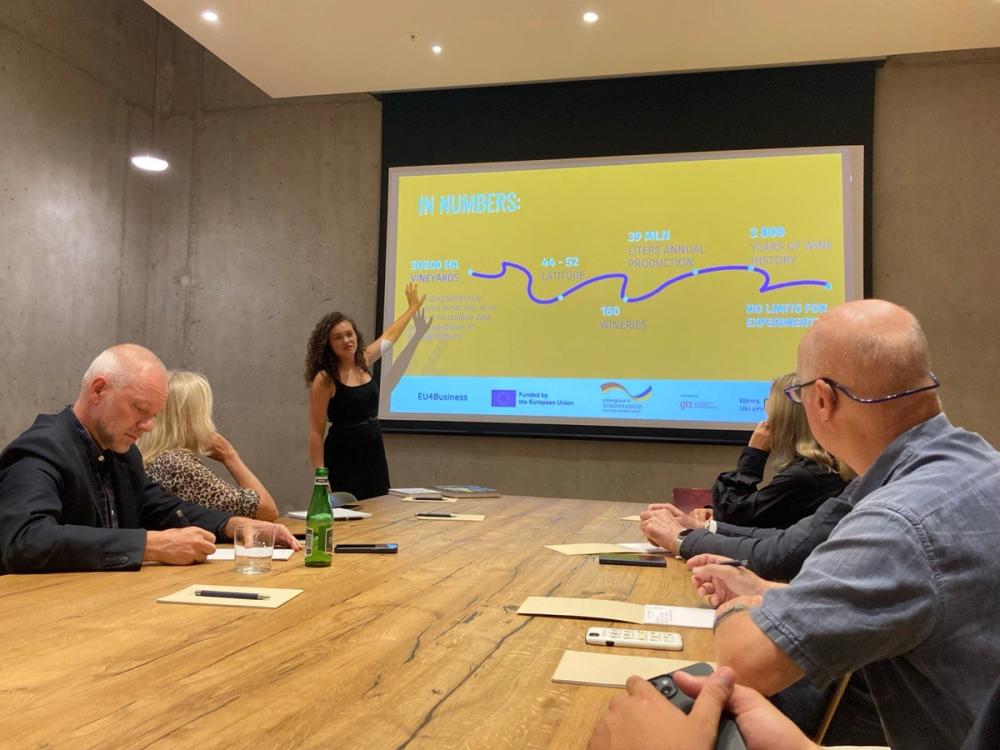
The MWs had the chance to explore and discover the background to the Ukrainian wine industry
This is also a great opportunity to remind the international community about Ukrainian wines, draw attention to them, and convey to consumers that Ukrainian wines are unique, interesting, and deserve recognition.
Thanks to this event we have also attracted more attention to domestically produced wines in the internal market.
What plans do you have for promoting and building on the Top 24 initiative in the coming years?
The next step will be event with the Top 24 list in Warsaw. Additionally, there is already a proposal to hold a presentation in the Netherlands, and we are also considering the format of an event in the UK. Our team will also be conducting a series of events in various cities across Ukraine.
We also plan a lot of domestic promotion. The professional community of Ukrainian sommeliers has reacted really well to the list and some bloggers made collaborations with the wineries to promote the list.
We plan to continue this initiative and possibly make it an annual event. We hope that next year we will be able to host it in Ukraine.
The Top 24 Best Wines of Ukraine
Grande Vallée White Brut 2023 «Méthode Charmat» (Chardonnay 40%, Riesling 30%, Pinot Blanc 30%)
Chateau Chizay Carpathian Sekt Rose Blaufränkisch Brut 2023 (Blaufränkisch 100%)
Grande Vallée White Brut 2020 «Méthode Traditionnelle» (Chardonnay 50%, Pinot Blanc 25%, Pinot Meunier 25%)
Kolonist Bisser Brut, Traditional Method (Chardonnay 100%)
SHABO Chardonnay Reserve 2022 (Chardonnay 100%)
Beykush Winery Telti-Kuruk 2023 (Telti-Kuruk 100%)
Frumushika-Nova Muscat Ottonel Not Filtered 2022 (Muscat Ottonel 100%)
Villa Tinta Sukholymansky Premium Collection 2022 (Sukholymansky 100%)
Bolgrad Chardonnay Grand Reserve Collection 2022 (Chardonnay 100%)
Frumushika-Nova Suholimanske Not Filtered 2023 (Sukholymansky 100%)
SHABO Telti-Kuruk Grand Reserve 2022 (Telti-Kuruk 100%)
Beykush Winery Arbina 2021 (Rkatsiteli 100%)
Chateau Chizay Furmint Orange 2023 (Furmint 100%)
Rose my Wine Eduard Gorodetsky 2023 (Pinot Noir 100%)
Grande Vallée Saperavi Reserve 2022 (Saperavi 100%)
SHABO Cabernet Merlot Grande Reserve 2022 (Cabernet Sauvignon 70%, Merlot 30%)
Beykush Winery Loca Deserta 2020 (Merlot 29%, Saperavi 28%, Malbec 15%, Cabernet Sauvignon 14%, Tempranillo 14%)
46 Parallel Grand Admiral Сabernet Sauvignon - Merlot - Saperavi 2018 (Cabernet Sauvignon 40%, Merlot 40%, Saperavi 20%)
GIGI winery Alibernet reserve 2022 (Odesa Black 100%)
Villa Tinta Odesa Black Premium Collection 2020 (Odesa Black 100%)
Kolonist Cabernet Merlot Haute Gamme 2018 (Cabernet-Sauvignon 50%, Merlot 50%)
Bolgrad Cabernet Sauvignon Reserve Bolgrad 2021 (Cabernet Sauvignon 100%)
Beykush Beykush Red 2023 (Pinotage)
Chateau Chizay Furmint Late Harvest 2022 (Furmint 100%)
Super Top 12

The MWs get down to tasting the wines
Grande Vallée White Brut 2023 «Méthode Charmat» (Chardonnay 40%, Riesling 30%, Pinot Blanc 30%)
Kolonist Bisser Brut, Traditional Method (Chardonnay 100%)
SHABO Chardonnay Reserve 2022 (Chardonnay 100%)
Beykush Winery Telti-Kuruk 2023 (Telti-Kuruk 100%)
Frumushika-Nova Muscat Ottonel Not Filtered 2022 (Muscat Ottonel 100%)
Villa Tinta Sukholymansky Premium Collection 2022 (Sukholymansky 100%)
Beykush Winery Arbina 2021 (Rkatsiteli 100%)
Grande Vallée Saperavi Reserve 2022 (Saperavi 100%)
SHABO Cabernet Merlot Grande Reserve 2022 (Cabernet Sauvignon 70%, Merlot 30%)
Beykush Winery Loca Deserta 2020 (Merlot 29%, Saperavi 28%, Malbec 15%, Cabernet Sauvignon 14%, Tempranillo 14%)
GIGI winery Alibernet reserve 2022 (Odesa Black 100%)
Chateau Chizay Furmint Late Harvest 2022 (Furmint 100%).
* You can find out more about information about the Top 24 Best Wines of Ukraine at its website here.
* For more information about Ukrainian winemaking, its history, Ukraine’s wine regions and grape varieties click here.
